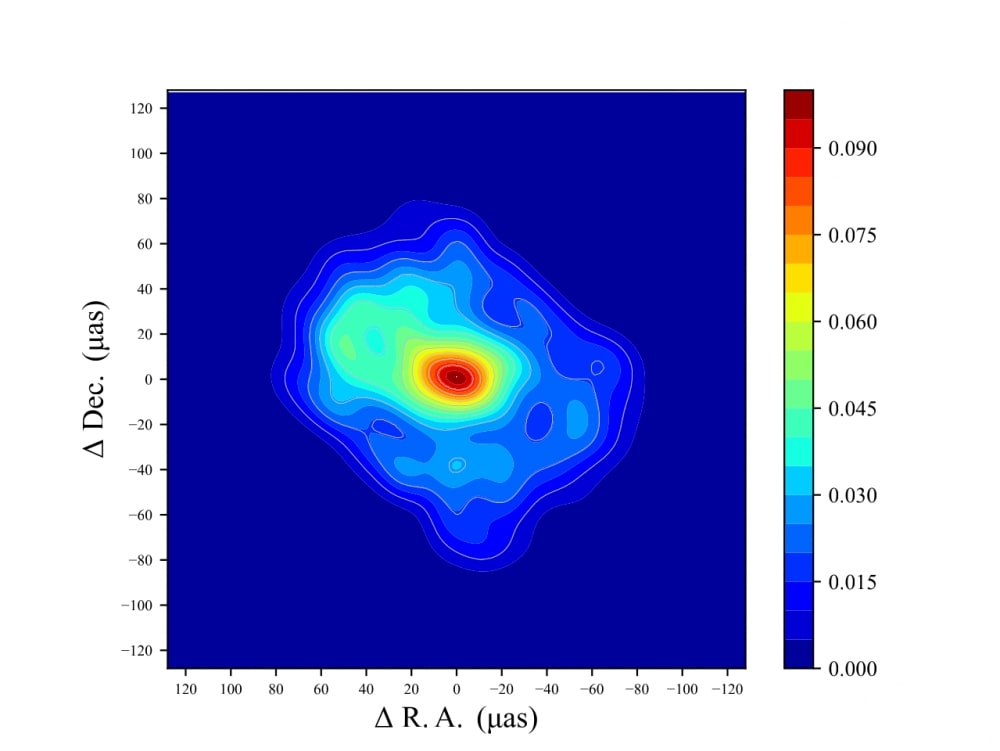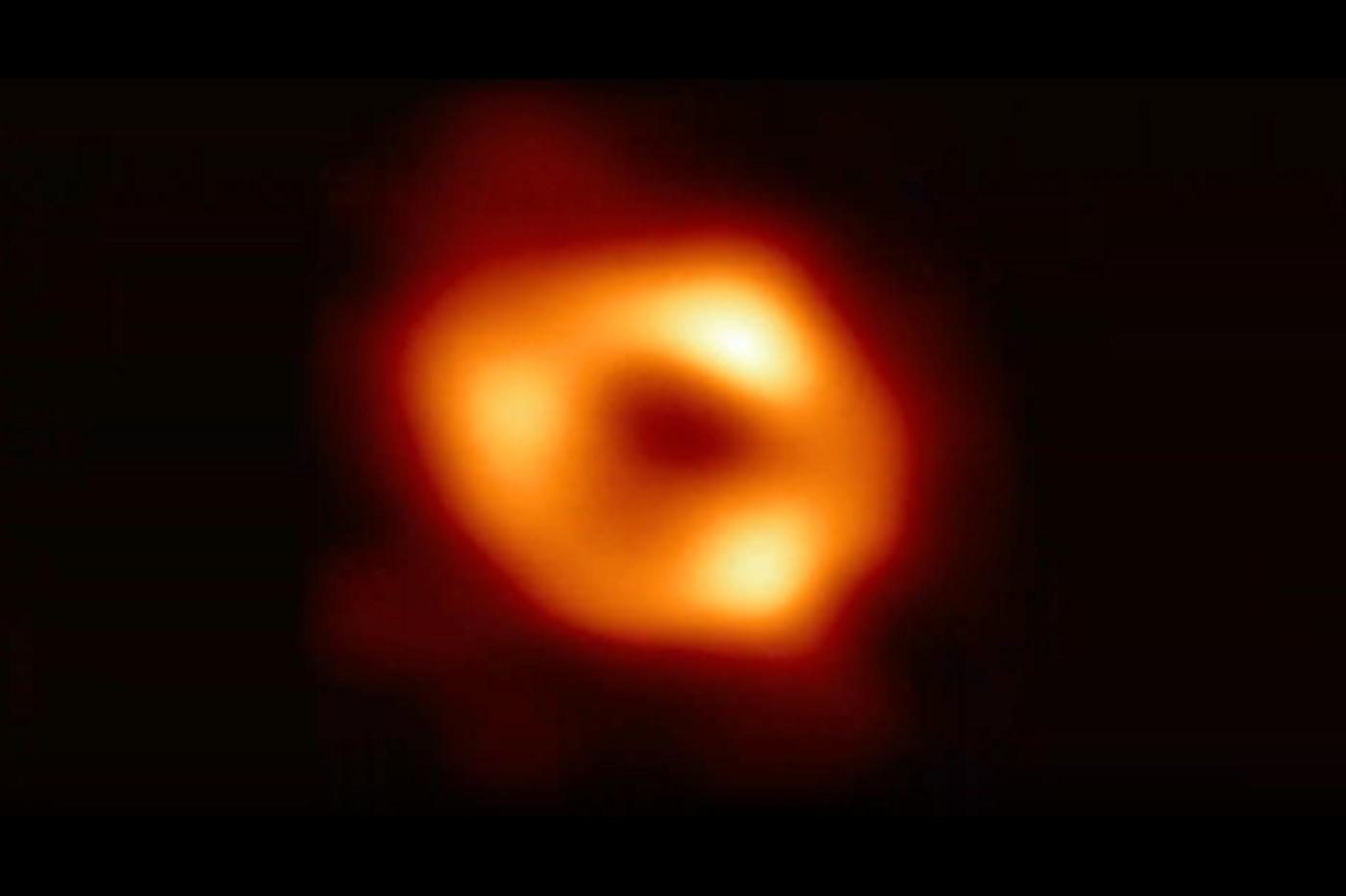In spring 2022, astronomers from ETHC, the prestigious institution behind the Event Horizon Telescope (EHT), unveiled the very first photo of Sagittarus A*. This shot of the immense supermassive black hole that resides at the center of our galaxy is a true technical feat that has been applauded with both hands by the entire scientific community. But two and a half years later, other researchers suggested that the revolutionary image may not have been as representative of reality as previously thought.
In any case, this is what emerges from the latest NAOJ study (National Astronomical Observatory of Japan). The authors of this work relayed by Universe Today have determined that the disk surrounding this cosmic juggernaut does not take the shape of a very regular “donut” (or more precisely a torus); he would actually be much longer than the original image suggested. A result which could force specialists to reconsider the structure of this object which governs the hundreds of billions of stars in the Milky Way.
Photographing the invisible, an immense technical challenge
If these images are so rare, it is above all because their production requires a pharaonic quantity. Indeed, black holes are famous for their propensity to irremediably capture everything that passes nearby, including electromagnetic waves such as light or radio waves. These waves being the basis of almost all observation techniques, it is not enough to point a telescope at the target and press the trigger as one would do with a planet; the only solution is to use indirect observation techniques.
More specifically, researchers are trying to paint a picture not of the black hole itself, but of its accretion disk. This term designates a disk composed of matter superheated by various magnetic and gravitational phenomena originating from this cosmic ogre. It is one of the few directly observable elements that betray the presence of the black hole – but that does not mean that it is easy to draw their portrait.
An efficient but imperfect observation technique
To date, there is only one technique that can achieve this:interferometry. It consists of analyzing the way in which waves (here electromagnetic) interact with each other, thus creating what we call interference from which researchers can extract valuable information. However, state-of-the-art interferometers are generally not made up of a single isolated telescope. To collect sufficient data, specialists call on vast arrays of telescopeshere specializing in radio waves.
It’s an approach that produces great results, but it’s also not perfect. In fact, these telescopes being separated by great distances, there are necessarily gray areas in the data.
This has a very concrete implication for researchers. Indeed, they cannot simply superimpose the readings from each telescope. To obtain a complete image from this truncated data, they must be processed using very advanced mathematical tools. Therefore, current radio interferometry is not (yet) an exact science; results may vary significantly depending on the algorithms used to carry out this process.
A different form full of potential implications
It is into this gap that Japanese astronomers have rushed. They combed through the Event Horizon Telescope observations using different analytical methods than the original team. Inevitably, their algorithms produced a significantly different result. On their final rendering, the accretion disk appears significantly more elongated than in the original imagewhere it was almost perfectly circular.

This is a very interesting prospect for astrophysicists. Indeed, the shape of this disc is far from being anecdotal. Specialists can deduce a lot of information relating to the dynamics of the black hole, such as its rotation speed or its accretion rate – the speed at which it swallows matter. In other words, if the shape of the accretion disk was indeed different, it could help astrophysicists better understand the dynamics and history of this monster that dominates the Milky Way.
Results rejected by the first authors
But not everyone was convinced by this independent analysis – starting with the authors of the original image. Indeed, the Event Horizon Telescope team quickly published its opinion on this new study… and the least we can say is that the Japanese astronomers took it for granted! In essence, ETH experts explain politely, but with such unusual firmness that the NAOJ’s counter-analysis is riddled with errors and approximations.
“A recently published reanalysis (here called M24) claims to identify flaws in the EHTC analysis and provides a new picture that differs from the EHTC result. EHTC experts find many errors in M24 analysis“, indicates the press release from the institution.
In particular, they assert that the Japanese researchers’ approach does not take into account certain crucial parameters, such as “intrinsic variability” of the black hole or the calibration data. They also point out errors of interpretation and methodology, notably through two particularly harsh sentences which, in academic jargon, sound like a accusation of pure and simple amateurism.
“M24 unfairly interprets biases in its own methodology as demonstrations of biases in EHTC methodologies. Additionally, EHTC experts note many misinterpretations of its methodologies and results“, attacks the press release.
As it stands, it is therefore appropriate to take this new analysis with a pinch of salt. But this situation has the merit of showing that we are still very far from mastering the theory of black holes. It will therefore be very interesting to see if this series will open the way to other complementary studies on Sagittarius A*, and if so, to examine their conclusions. In the meantime, the debate remains open!
The text of the NAOJ counter-analysis is available here. ETHC’s response is available here.
🟣 To not miss any news on the WorldOfSoftware, , .












